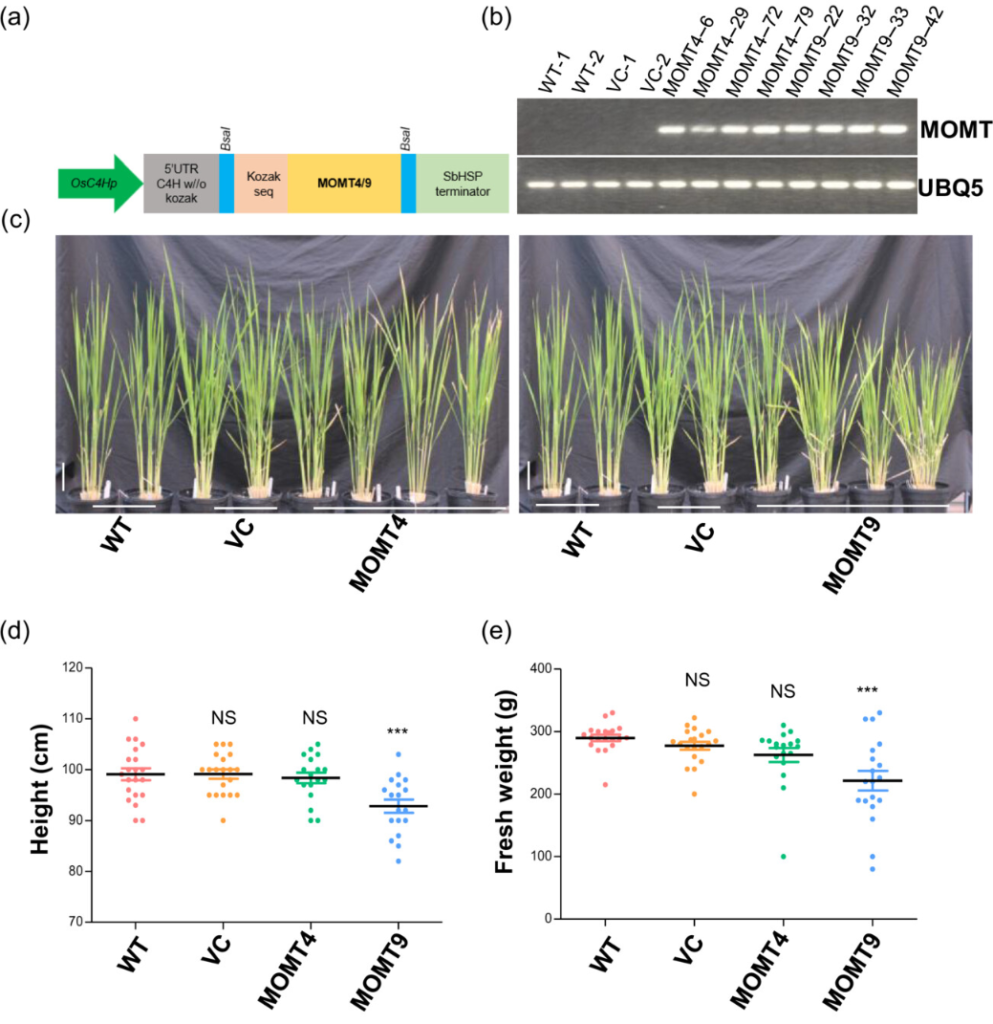Simultaneous Suppression of Lignin, Tricin and Wall-Bound Phenolic Biosynthesis via the Expression of Monolignol 4-O-Methyltransferases in Rice
Themes: Feedstock Production
Keywords: Biomass Analytics, Genome Engineering
Citation
Dwivedi, N., Yamamoto, S., Zhao, Y., Hou, G., Bowling, F., Tobiamtsu, Y., Liu, C.J. Oct. 5, 2023. “Data for Simultaneous Suppression of Lignin, Tricin, and Wall-Bound Phenolic Biosynthesis via Expression of Monolignol 4-O-Methyltransferases in Rice.” University of Illinois Urbana-Champaign. DOI: 10.13012/B2IDB-1678517_V1.
Overview

Grass lignocelluloses feature complex compositions and structures. In addition to the presence of conventional lignin units from monolignols, acylated monolignols and flavonoid tricin also incorporate into lignin polymer; moreover, hydroxycinnamates, particularly ferulate, cross-link arabinoxylan chains with each other and/or with lignin polymers. These structural complexities make grass lignocellulosics difficult to optimize for effective agro-industrial applications. In the present study, we assess the applications of two engineered monolignol 4-O-methyltransferases (MOMTs) in modifying rice lignocellulosic properties. Two MOMTs confer regiospecific para-methylation of monolignols but with different catalytic preferences. The expression of MOMTs in rice resulted in differential but drastic suppression of lignin deposition, showing more than 50% decrease in guaiacyl lignin and up to an 90% reduction in syringyl lignin in transgenic lines. Moreover, the levels of arabinoxylan-bound ferulate were reduced by up to 50%, and the levels of tricin in lignin fraction were also substantially reduced. Concomitantly, up to 11 μmol/g of the methanol-extractable 4-O-methylated ferulic acid and 5–7 μmol/g 4-O-methylated sinapic acid were accumulated in MOMT transgenic lines. Both MOMTs in vitro displayed discernible substrate promiscuity towards a range of phenolics in addition to the dominant substrate monolignols, which partially explains their broad effects on grass phenolic biosynthesis. The cell wall structural and compositional changes resulted in up to 30% increase in saccharification yield of the de-starched rice straw biomass after diluted acid-pretreatment. These results demonstrate an effective strategy to tailor complex grass cell walls to generate improved cellulosic feedstocks for the fermentable sugar-based production of biofuel and bio-chemicals.
Data
- MOMT4 and MOMT9 activities
- Study primers